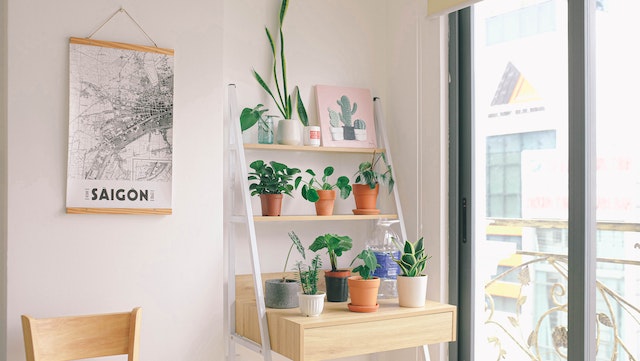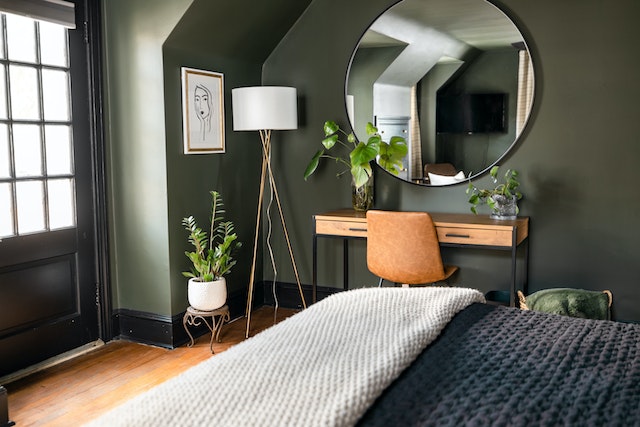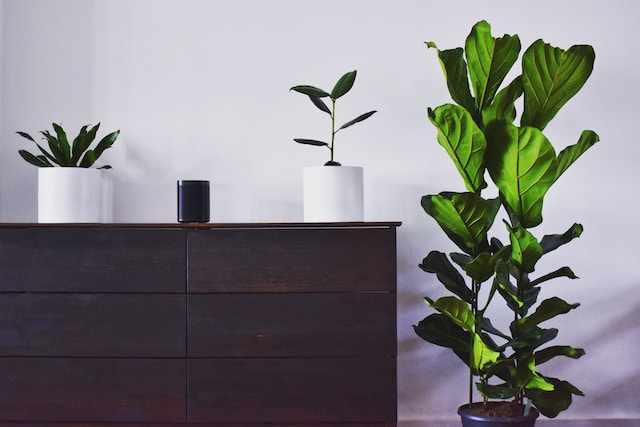Imagine walking into a home that feels like a lush oasis, where vibrant greenery breathes life into every corner. The secret to creating such a space? It’s quite simple – indoor plants. Styling your home with indoor plants adds a pop of colour and texture and offers numerous health benefits. But how can you style your home with indoor plants? Our experienced team at gardenwizardshop.com, has put together this comprehensive guide, that will teach you how to seamlessly incorporate plants into your home decor, transforming your living space into a green haven that will leave your guests in awe.
Indoor plants are so much more than just decorative accents. Incorporating indoor plants into your home design is like inviting Mother Nature herself to take up residence in your personal sanctuary. So if you are looking for ways to make your new place feel like home, we’ve got the answer you need. But on top of helping you feel at home in no time, these leafy companions also act as natural air purifiers, quietly filtering out toxins and releasing fresh oxygen.

As if that weren’t enough, the presence of plants has been scientifically proven to reduce stress, boost mood, and enhance cognitive function. Surrounding yourself with these green wonders can transform your home into a tranquil retreat where your stress melts away and creativity blossoms. By integrating indoor plants into your decor, you’re investing in a stylish and dynamic design element and fostering a nurturing environment that promotes mental and emotional well- being for you and your loved ones. Now let’s find out how to style your home using indoor plants.
Just like selecting the perfect colour palette for your home, choosing the right combination of plants is crucial in creating a cohesive and visually pleasing space. Start by considering the size, shape, and colour of the plants you want to include. Aim for a mix of large, statement plants, like fiddle-leaf figs or monstera, and smaller, low-maintenance options, such as succulents or snake plants.
Don’t be afraid to experiment with various shades of green and textures to add depth and interest. For a more exotic touch, consider incorporating plants with unique foliage patterns, such as calatheas or prayer plants, to create an eye-catching display.
Lighting plays a significant role in the health of your indoor plants, so it’s essential to take note of the natural light conditions in each room. Different plants have varying light needs, ranging from low light to bright, indirect light. For example, a north-facing window provides the lowest light, while a south-facing window offers the brightest.
Be sure to place your plants in areas that meet their specific light requirements to ensure they thrive. If you have limited natural light, consider using artificial light sources, such as grow lights or LED bulbs, to supplement your plants’ needs. There are also different plants that thrive in indoor light to choose from.
When incorporating plants into your home, it’s important to consider your existing decor’s style and colour scheme. Think of plants as an extension of your interior design, and choose containers that complement your furniture, artwork, and other decorative elements.

Consider using neutral-coloured pots for a minimalist look, or add a pop of colour with vibrant planters. Additionally, consider the scale of your furniture and ensure that your plants and their containers are proportionate. For example, large plants can balance out over-sized furniture pieces, while smaller plants can add a touch of greenery to shelves or side tables.
Adding height to your indoor garden creates visual interest and allows you to maximise your space. Utilise shelves, hanging planters, and tiered plant stands to display your greenery at varying heights. This is especially useful if you’re trying to decorate a small apartment with indoor plants.
So if you’re short on floor space, consider installing floating shelves or using wall-mounted planters. Mixing and matching different heights adds depth and dimension, making your space feel more dynamic and engaging. Additionally, elevating plants can help them receive adequate light and improve air circulation, promoting healthier growth.
Creating a dedicated plant corner or feature wall is one way to make a bold statement with indoor plants. Grouping plants in a designated area of your home allows you to create a lush, jungle-like atmosphere. Combine a mix of trailing plants, like pothos or string of pearls, with taller plants, such as bird of paradise or rubber plants, to create a striking visual display.
A plant wall can also double as a natural divider in open-concept spaces, providing both privacy and beauty. To create a cohesive look, consider using matching pots or planters, or opt for various complementary styles for a more eclectic vibe.
While the living room and kitchen are popular locations for indoor plants, don’t forget about other areas of your home. Consider adding greenery to your bathroom, bedroom, or home office. Smaller plants, like air plants and ferns, can thrive in the humid environment of a bathroom, while the calming effects of lavender or jasmine make them ideal choices for the bedroom.
Incorporating plants in your workspace can boost productivity and reduce stress, making it easier to focus and stay motivated. Even small additions, like placing a potted plant on your nightstand or windowsill, can significantly impact the overall ambiance of a space.
Don’t be afraid to get creative with groupings and layouts when arranging your plants. Cluster plants with similar care requirements together or create contrast by pairing plants with different shapes and textures. For example, you can place a tall, slender plant next to a low, bushy one for an eye-catching contrast. You can also experiment with setting plants at varying distances from one another, creating a sense of depth and movement.

Styling your home with indoor plants is an art that combines aesthetics and functionality. By carefully selecting plants that suit your space, complement your decor, and meet your light requirements, you can create a vibrant, calming atmosphere that enhances your well-being and adds visual interest to your home. If you do it right, plants can even help you sell your home when the time comes.
So why not embark on your own botanical journey and discover the transformative power of indoor plants? With the tips and tricks outlined in this guide, you’ll be well on your way to styling your home with indoor plants like a pro and creating a green oasis that will delight and inspire you for years to come.